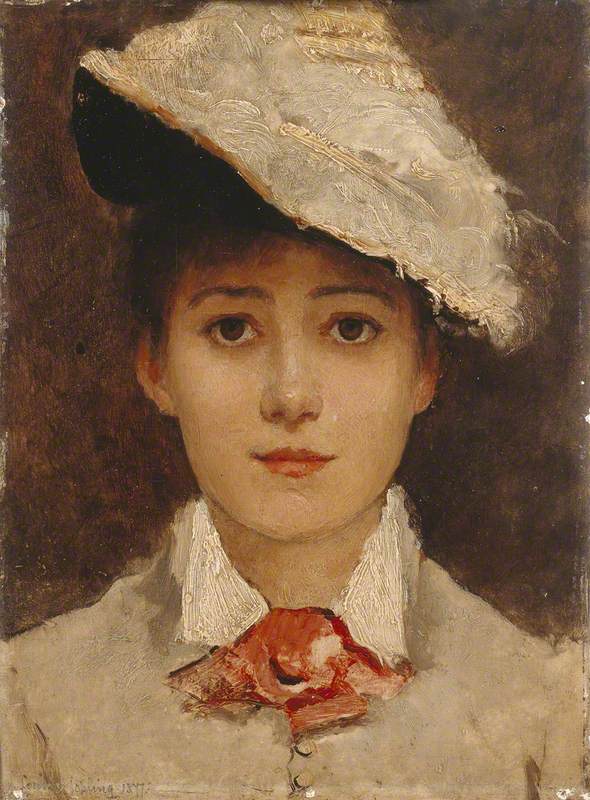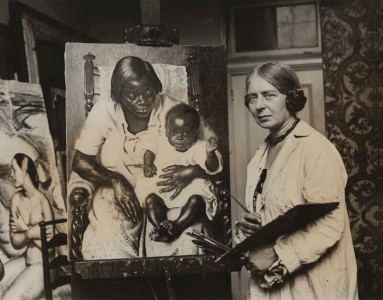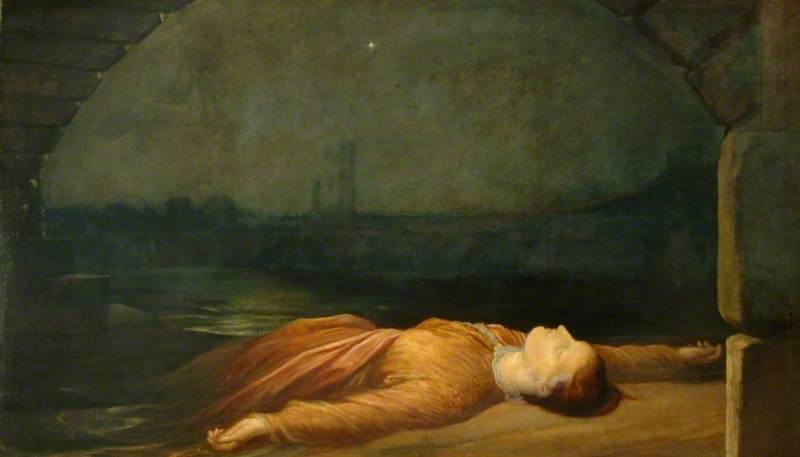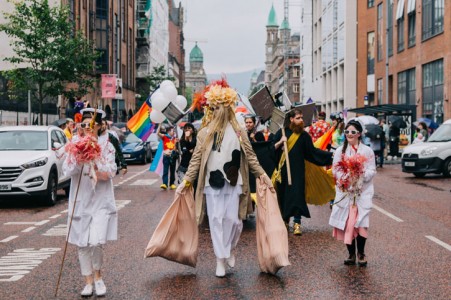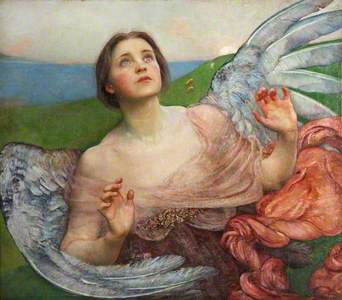Manchester-born painter Annie Louisa Swynnerton (née Robinson, 1844–1933) was a pioneering woman who challenged convention in art and life. Had her father’s business not gone bankrupt she may never have become an artist, but this unfortunate turn in her family’s circumstances led her to enrol at the Manchester School of Art and, from there, establish a career spanning 60 years. This was not an easy journey at a time when women were not permitted to study art on equal terms to men. Nevertheless, she acquired the training she needed and produced over 200 paintings including landscapes, portraits, subject pictures and nudes. Thirty-six of her works can be found in public collections in the UK and they give us a valuable insight into her artistic development, interests and life.
A portrait of The Reverend William Gaskell (husband of novelist Elizabeth Gaskell) is a fine example of Swynnerton’s early work. The focus on the face with the light falling on it set against a dark background shows the influence of artists such as Titian and Rembrandt as well as her contemporary John Everett Millais. Her sensitive portrayal of an elderly face and concern with Gaskell’s humanity and intelligence also demonstrate her emerging skill in capturing a likeness and communicating personality. By 1879 when this was painted, she had made her first visit to Italy to study Renaissance art and was busy establishing herself professionally after five years of training.
Gaskell was a respected public figure in Manchester and it was thanks to his daughters that Swynnerton gained this commission. Their support also gained Swynnerton introductions to some of the leading artists of the day, including Edward Burne-Jones, when she moved to London in 1880. There she started exhibiting at the Royal Academy and one of the earliest works she sent there was Tryst, which was bought by the brewer Henry Boddington. It was also known as The Factory Girl’s Tryst and is an early example of her social conscience coming through in her work.
After her first trip in 1874, Swynnerton made several more visits to Italy with her friend and fellow Manchester artist Susan Isabel Dacre. She was captivated by the Italian light and landscape and this developed into a lifelong passion facilitated by her marriage to sculptor Joseph Swynnerton in 1883, who was based in Rome.
The effect on her art was profound and she started to paint landscapes in bright earthy tones which evolved into sun-drenched scenes characterised by an intense palette of pinks and blues with bold white highlights. She also painted contemporary Italian women and children in the outdoors, exploring how to model the human form in bright sunlight through the use of thick white paint and expressive brushwork.
From the outset of her career, Swynnerton had aspirations to paint the human figure and subjects inspired by classical mythology. A major barrier to this, however, was lack of access to life classes. It was an early source of frustration to her that at the Manchester School of Art, as in most English art schools, women were only permitted to study draped and clothed figures. To address this, she went off to Paris and attended the progressive Académie Julian at which female students were allowed to study the nude. She also set up the Manchester Society of Women Painters in 1879 with eight other female artists in the city. The group arranged life classes for women and provided professional opportunities such as exhibitions. She was thus able to gain the skills she needed to paint classical subjects with nudes, such as Cupid and Psyche, and was an early female pioneer in this genre.
Swynnerton lived in uncertain and exciting times for women. The fight for female suffrage was gaining momentum and women were campaigning for equality in many spheres, public and private. There was hope and optimism but also anxiety about what could be achieved, and these feelings are embodied in a series of imaginative paintings that she worked on from the 1890s. A typical example is The Sense of Sight which features a winged female figure representing hope for women’s future freedoms. Swynnerton was a passionate supporter of women’s rights throughout her life and a non-militant suffragist.
After her husband’s death in 1910, Swynnerton spent less time in Italy and more time in London. She exhibited regularly and was admired and championed by figures such as John Singer Sargent. Her work was critically acclaimed and she achieved an international reputation, and yet struggled to be recognised by the leading professional body of the time, the Royal Academy. After being nominated unsuccessfully twice she was finally elected an Associate of the Royal Academy (ARA) in 1922 – the first woman to be elected to any honour since the Academy’s foundation in 1768. The recognition was welcome and was the catalyst for her first solo exhibition (Manchester Art Gallery, 1923) but she felt disappointed with how late this had come in her career.
A rare chalk portrait of Swynnerton by Gwenny Griffiths captures the determined character and independent spirit that helped her to fight for equality in a male-dominated art world. She carried on painting right up until her death in 1933 and produced some of her largest and most visionary works in her later years. Many of these are untraced or lost but a work of 1923 in Manchester’s collection – Montagna Mia – gives a sense of the artistic freedom she seems to have experienced in her 70s and 80s.
The imagery here of a woman atop a mountain seems apt given it was painted just a year after her ARA and could be read as an expression of her sense of achievement. This work was bequeathed by the artist to Manchester Art Gallery on her death, and is now part of the biggest collection of her work in a public institution.
Rebecca Milner, Curator: Fine Art, Manchester Art Gallery
Rebecca is also co-curator of the exhibition 'Annie Swynnerton: Painting Light and Hope', on display at Manchester Art Gallery until 6 January 2019.









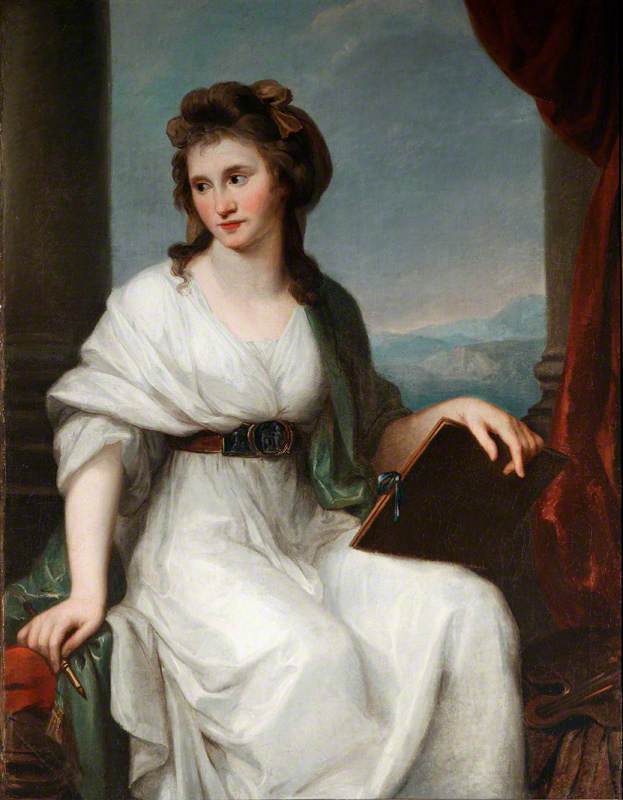





.jpg)


